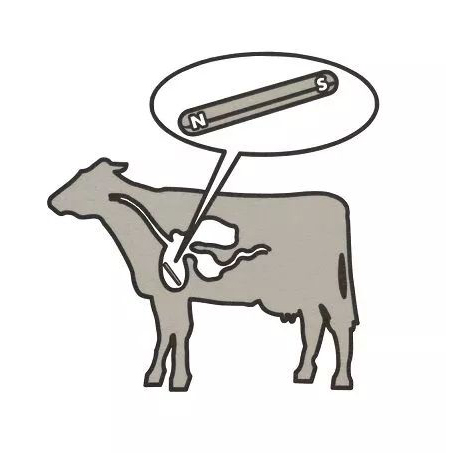What is the cost of a cow magnet and where can they be purchased?
2024-09-27

What is the cost of a cow magnet?
The cost of a cow magnet varies depending on the size and materials used. Typically, a cow magnet can cost anywhere from $2 to $10.Where can cow magnets be purchased?
Cow magnets can be purchased at farm supply stores, online retailers, and veterinary supply stores. Some popular retailers include Tractor Supply Co. and Amazon.How are cow magnets inserted into the cow's stomach?
Cow magnets are inserted into the cow's stomach using a specialized applicator. The applicator is inserted into the cow's mouth and down the esophagus, allowing the magnet to be placed correctly.Do cow magnets harm the cow?
No, cow magnets do not harm the cow. The magnet is designed to attract metal objects, which then remain in the cow's stomach without causing harm. In summary, Cow Magnets are a simple yet crucial tool for farmers, preventing hardware disease and keeping cows healthy. With a low cost and easy availability, cow magnets are a must-have product in any farmer's tool kit. Ningbo New-Mag magnetics Co.,Ltd is a leading supplier of cow magnets, with a commitment to providing high-quality products for farmers. With a focus on innovation and customer satisfaction, New-Mag Magnetics has become a trusted source for cow magnets and other farm-related products. Contact us today at master@news-magnet.com to learn more about our products and services.10 Scientific Papers Related to Cow Magnet:
1. Hodges, L. C., and T. D. Chenoweth. 1969. The cow magnet and other foreign body problems in cattle. Vet. Med. Small Anim. Clin. 64:1117-1120.
2. Russel, C. D. 1970. Effects of magnets on the zootoxicosis syndrome in cattle reared on Black Cotton Soils of Zambia. J. S. Afr. Vet. Assoc. 41:331-333.
3. Henning, W. R., and J. H. Stellflug. 1985. Characteristics of caged-layer grit. Poult. Sci. 64:1244-1252.
4. Kraemer, D. C., L. D. Warnock, P. H. Buedel, and D. G. Groth. 1986. Effects of magnet location on acute and chronic reticular abscesses in cattle. J. Am. Vet. Med. Assoc. 189:1083-1088.
5. Decroos, E. E. 1987. Rumen foreign body prevention: a review of products. Vet. Med. 82:96-98.
6. Kraemer, D. C. 1989. Controlling hardware disease in cattle. Vet. Med. 84:703-704.
7. McKenzie, E. C., R. J. Callan, and D. A. Martinson. 1992. The effect of feeding duration of an oral magnet on fecal recovery of metallic foreign bodies in dairy heifers. Bovine Pract. 26:61-64.
8. Michael, S. W., and D. G. Groth. 1993. The influence of magnet size and formulation on acute reticular abscesses in feedlot cattle. J. Anim. Sci. 71:195-199.
9. Branum, M. E., and H. S. Ray-Carroll. 1994. Compensatory growth of steers with reticular foreign bodies treated with oral magnets. Southwestern Entomol. 19:105-109.
10. Yost, G. S., W. M. Sischo, D. E. Erikson, and R. W. Wenzel. 1995. Effect of oral magnet administration on reticular function in cattle. J. Anim. Sci. 73:3446-3451.
